Posting on social media can feel like a constant scramble. One day you have a great idea, the next you are staring at a blank screen, unsure what to share. This inconsistent approach can hurt your brand’s growth. A well planned social media calendar ends this cycle. It transforms your social media from a daily chore into a powerful marketing tool that drives real results for your small business.
This guide will show you how to build a social media calendar that truly works. We will walk through setting clear goals, understanding your audience, and organizing your content. You will learn how to create a system that saves you time and helps you connect with customers consistently.
Start with Your Business Goals
Before you think about what to post, you need to know why you are posting. Your social media efforts should always support your larger business objectives. Without clear goals, your content will lack direction and purpose.
Start by asking what you want to achieve with social media. Common goals for small businesses include:
- Increase Brand Awareness: Get more people to recognize your business name and what you offer.
- Generate Leads: Encourage potential customers to sign up for your email list or contact you for a quote.
- Drive Website Traffic: Send users from your social profiles to your website to learn more or make a purchase.
- Build a Community: Create a loyal group of followers who engage with your brand and each other.
- Boost Sales: Promote your products or services directly to drive revenue.
Choose one or two primary goals to focus on. For example, a local bakery might want to increase brand awareness in their neighborhood and drive foot traffic to their store. All their content should then work toward achieving those specific outcomes.
Know Your Audience Deeply
You cannot create content that resonates if you do not know who you are talking to. Understanding your audience is the key to making your social media feel personal and valuable. Generic posts get ignored. Posts that speak directly to a person’s needs get attention.
Create Audience Personas
Develop simple profiles of your ideal customers. Give them names and list their key traits. Consider details like:
- Demographics: Age, location, job title.
- Interests: Hobbies and topics they care about.
- Pain Points: Problems they face that your business can solve.
- Online Habits: Which social media platforms do they use most? When are they typically online?
For instance, a fitness coach might target “Working Professional William,” a 35 year old who struggles to find time for exercise. This persona helps the coach create content about quick workouts and healthy meal prep ideas that fit a busy schedule.
Find Where Your Audience Spends Time
Do not try to be on every social media platform. Focus your energy where your target audience is most active. A business selling handmade jewelry might find its audience on visual platforms like Instagram and Pinterest. A B2B consulting firm will likely connect with clients on LinkedIn. Research where your ideal customers hang out online and build your presence there.
Choose Your Content Pillars
Content pillars are the main themes or topics you will talk about regularly. They are based on your goals and your audience’s interests. Having three to five pillars helps you stay focused and ensures your content is varied but consistent.
Think of your pillars as the main categories for your posts. For the local bakery, the pillars could be:
- Behind the Scenes: Showcasing the baking process and introducing the team.
- Product Spotlights: Highlighting daily specials, new creations, and popular items.
- Customer Stories: Featuring photos and testimonials from happy customers.
- Community Events: Promoting local happenings or partnerships.
These pillars give the bakery a framework for planning. When they need a post idea, they can simply look at their pillars and create something that fits. This structure prevents you from running out of ideas.
Plan Your Content with a Calendar
Now it is time to bring everything together in a calendar. This can be a simple spreadsheet, a Google Calendar, or a dedicated social media scheduling tool. The tool is less important than the system you build around it.
Decide on a Posting Frequency
Consistency is more important than frequency. It is better to post three high quality posts per week, every week, than to post twice a day for one week and then go silent for two. Look at your resources and decide on a realistic schedule. Start small and you can always increase your frequency later.
Structure Your Calendar
Create a calendar with columns for essential information. Your calendar should include:
- Date and Time: When the post will go live.
- Platform: Which social network the post is for (e.g., Facebook, Instagram).
- Content Pillar: The theme the post belongs to.
- Post Copy: The exact text for your post.
- Visuals: A link or description of the image or video.
- Link: Any URL you are including in the post.
- Status: A way to track progress (e.g., Draft, Scheduled, Posted).
Batch Your Content Creation
One of the biggest benefits of a calendar is the ability to batch your work. Instead of creating posts daily, set aside a few hours each week or month to plan, write, and design all your content at once. For example, you could dedicate one Monday morning to creating all of your social media posts for the next two weeks. This approach is more efficient and frees you up to focus on other parts of your business.
A Real World Example
Let’s look at a hypothetical small business: “Paws & Play,” a dog walking service.
- Goal: Generate leads (get more booking inquiries).
- Audience: Busy dog owners in a specific city.
- Content Pillars: Happy Dog Photos, Pet Care Tips, Client Testimonials, Meet the Walkers.
Here is what one week on their calendar might look like:
- Monday: (Pet Care Tips) A post on “Three Signs Your Dog Needs More Exercise” with a link to their services page.
- Wednesday: (Happy Dog Photos) A carousel of photos from recent walks, tagging the dog owners with permission.
- Friday: (Client Testimonials) A graphic with a quote from a happy client about how Paws & Play saved them time.
This calendar is simple, goal oriented, and provides consistent value to their target audience.
Measure and Adjust
Your social media calendar is not a static document. It is a living plan that should evolve. Once a month, take time to review your social media analytics. Look at which posts performed best.
- Did a certain content pillar get more engagement?
- Did posts at a particular time of day reach more people?
- Did a specific call to action lead to more website clicks?
Use these insights to refine your strategy. If you notice that videos of your team get a lot of positive comments, plan to create more of them. If posts about sales fall flat, think about a different way to promote your products. This continuous loop of planning, executing, and measuring is what makes a social media calendar a tool for growth, not just for organization.
By following these steps, you can build a social media calendar that organizes your efforts, saves you time, and helps you achieve your business goals.
We Want To Talk To You About Your Marketing Goals.
Let’s Supercharge Your Online Growth!












